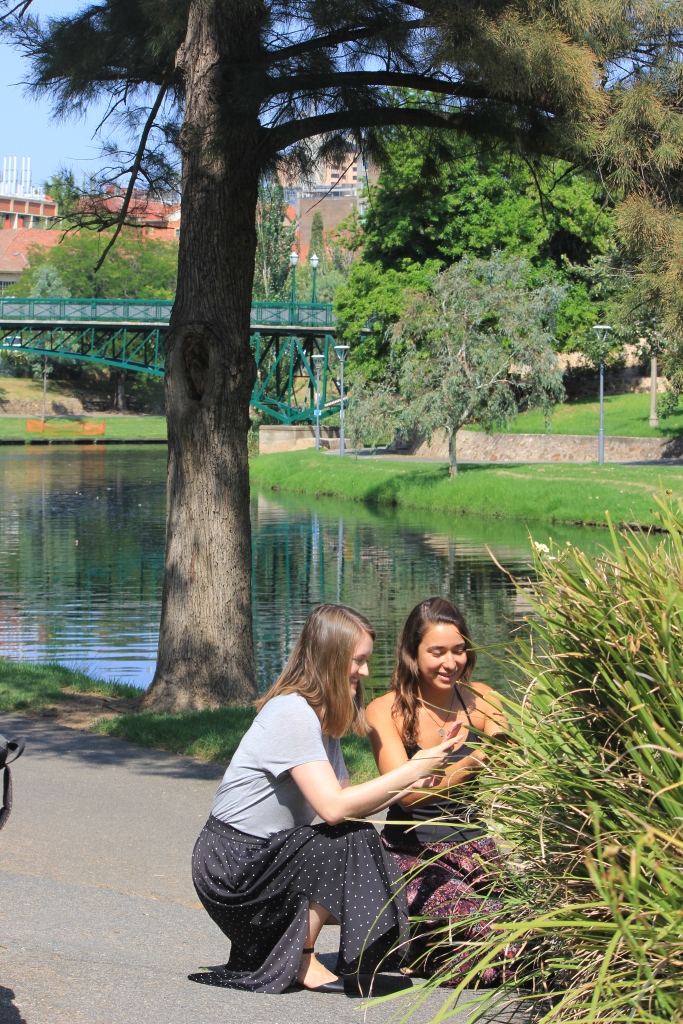About The City Nature Challenge
In 2020, Australia will be participating in the City Nature Challenge for the first time! The program was started in 2016 by the Natural History Museum of Los Angeles and the California Academy of Sciences as a competition between Los Angeles and San Francisco. Since this time the event has grown and become international. In 2019, there were more than 35,000 participants from 159 cities, documenting over 963,000 observations of plants and wildlife. With over 31,000 species identified it is an impressive grass roots effort with over 1,100 species observed being rare, threatened or endangered! With four cities entered it is an exciting time for Australian Citizen Science! Help your ‘city’ collect biodiversity data and see how we compare with other cities from around the world you can do this by making natural observations from April 24-27, 2020. Let’s show the world the incredible diversity Australia has to offer and it will be interesting to see the diversity of o. From koalas and kangaroos, to flora and fauna of all shapes and sizes!
days
hours minutes seconds
until
City Nature Challenge 2020
Participating Cities
Each city has a defined ‘Area’ shown on the iNaturalist ‘Project’ and during the 4-day window of this challenge, if you are anywhere in the area defined , snap a photo of your natural observation and upload it to the iNaturalist website making sure to include the location! The observations will automatically be pooled the respective project so that we can all compare with other cities all over the world! Let’s get out there and have fun!
More information on the challenge can be found here!
Got Questions ? have a look at the City Nature Challenge FAQ’s or ask one in the CNC iNat forum
You can also see the Australian leader board on the ‘Australian umbrella project“. If you are outside a competing area and want to contribute, the good news is you can by identifying observations on the Umbrella project or you favorite city.
Impact of COVID-19
Research shows that being in nature has a range of health benefits, and is linked to reduced type II diabetes, cardiovascular disease, lowering blood pressure reducing stress among other things. Being in Nature can also provide overall positive feelings of well being. This April let’s channel these positive aspects of the City Nature Challenge in this time of disease.
- We will follow the guidelines/recommendations of The Australian Government Department of Health
- Due to the risks associated with COVID-19, we are suggesting the following alternatives to our previously planned events:
- Join our ‘Backyard Bio-blitz’, what can you find in your house or in your own backyard?
- Join our moth lights or put down cover boards at their houses to help bring nature to them!
- Join our “Backyard Bio-blitz” making observations on the biodiversity of your own backyard.
- If you are working with others
- Practice social distancing (it’s best if people stay ~2m apart)
- Don’t share, unwrapped food
- Ensure everyone washes their hands and/or have hand sanitizer
- Don’t pass around equipment such as binoculars, phones, guidebooks, etc.
- After April 28 – May 3, hold virtual ID parties!
- For more information on COVID-19 and the City Nature challenge, there is a “City Nature Challenge Frequently Asked Questions relating to COVID-19“

Greater Adelaide
The Greater Adelaide CNC is organized by Philip Roetman, Stephen Fricker and the team at the South Australian chapter of the Australian Citizen Science Association.
The Area of Greater Adelaide includes the City of Adelaide and the nearby regional town. This area features numerous urban and regional parks addition to a dynamic coast.

Redlands City QLD
Redland City holds the honour of the first Australian City to register to take part in the City Nature Challenge.
Redland City is situated on Quandamooka Country. Quandamooka means people of sand and seas. The Country includes the suburbs of Thorneside, Wellington Point, Birkdale, Capalaba, Ormiston, Cleveland, Thornlands, Sheldon, Victoria Point, Mount Cotton and Redland Bay plus the islands of North Stradbroke, Peel, Russell, Coochiemudlo, Lamb, Karragarra and Macleay as well as most of southern Moreton Bay.

Sydney
City Nature Challenge Sydney is organised by Alejandro Treviño and Thomas Mesaglio.
Sydney is the largest metropolitan area in Australia and includes all councils comprising the Greater Sydney Region. Sydney is home to Possums, bandicoots, gliders, lizards, snakes, frogs, many spectacular birds as well as many different insects and other invertebrates. The urban landscape also features unique Coastal, Estuarine and Marine Ecosystems.
The City Nature Challenge Sydney chapter is kindly supported by Taronga Zoo and UNSW Sydney.

Geelong
This ‘City’ is organized by Rod Lowther, Geelong Field Naturalist Club and Pete Crowcroft, Great Ocean Road Coast Committee.
The area is graced with wonderful sandy beaches, some rocky shoreline of the surf coast and the calm waters of Corio bay. While inland, the main areas are agricultural land of the Basalt Western grassland plains with dry eucalypt woodlands of the Brisbane National Park to the north and temperate rainforest and healthlands of the Otway National Park along the Great Ocean Road to the south.
City Nature Challenge Resources
Join a project on 
- City Nature Challenge 2020: Australia
- City Nature Challenge 2020: Greater Adelaide
- City Nature Challenge 2020: Redlands City QLD Australia
- City Nature Challenge 2020: Geelong
- City Nature Challenge 2020: Sydney
Citizen Science links
Send Us a Message

Copyright City Nature Challenge: Australia – All rights reserved

